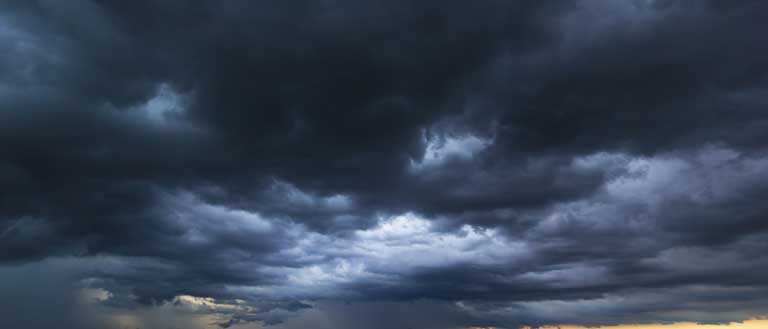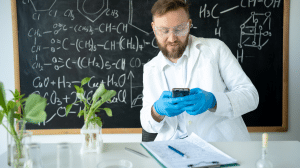The use of works, words, and ideas without attribution of citation is plagiarism. Most everyone knows that passing off someone else’s work as your own is plagiarism, but other more common types of plagiarism are less widely understood. Plagiarism, even inadvertent plagiarism, can damage a researcher’s reputation, and may also affect the researcher’s institution, funding, and future opportunities in science.
What is plagiarism?
A definition of plagiarism from Dictionary.com:
“1. An act or instance of using or closely imitating the language and thoughts of another author without authorization and the representation of that author’s work as one’s own, as by not crediting the original author.”
“2. A piece of writing or other work reflecting such unauthorized use or imitation.”
Stolen words and ideas can both be considered plagiarism.
From Plagiarism.org:
“But can words and ideas really be stolen?”
“According to U.S. law, the answer is yes. The expression of original ideas is considered intellectual property and is protected by copyright laws, just like original inventions. Almost all forms of expression fall under copyright protection as long as they are recorded in some way (such as a book or computer file).”
So not only is plagiarism of words and ideas theft, it can also come with legal ramifications of copyright violations.

In this era of Google search, Copyscape, CrossCheck, iThenticate, and other online plagiarism detectors, it is extremely easy to check whether a paper has been plagiarized in whole or in part.
With English as the language of science, scientists with English as a second language may be tempted to copy sentences or even whole paragraphs from their own or other’s papers because the idea or concept is already clearly stated. Most science journals will check your paper for plagiarism before publishing, and, if detected, demand corrections or reject the manuscript.
Although plagiarism is usually inadvertent, it can be detrimental to science as well as one’s career. Especially if the plagiarism is considered the theft of another’s ideas.
Writing Tip: Marking copied text to avoid plagiarism.
When writing a manuscript, it is common for authors to copy and paste ideas and sentences from other works with the intention of later rewriting and citing the text. During the process of writing (particularly if several authors are involved), this text can become incorporated into the manuscript unchanged and/or uncited. Whenever copying such text, use different fonts and text colors, and always take the time to note the source so that it is clear to you later and to other authors that this text needs to be rewritten and properly cited.
Types of Plagiarism:
Direct Plagiarism – The “borrowing” or “copying” of another’s words, images, or ideas and representing them as one’s own. This may be inadvertent or overt. Copying and pasting text or images from published work and doing so without quotes and/or citations is plagiarism. Small adjustments or paraphrasing while keeping the main content is still considered plagiarism. It is better to over-cite small sections of text you use than not. Keep in mind, however, that copying entire and large sections of text, even with quotations or citations, should be avoided.
Intellectual Plagiarism – This is the theft of the ideas and works of another without giving credit, and presenting the work falsely as your own. Plagiarizing ideas destroys the integrity of scientific research.
Replication of research methods from previously published work, without citation – While this is less severe than stealing ideas, it is not necessary as most methods can be rewritten. First, always check with the Instructions to Authors of the journal to which you plan to submit your manuscript. Some journals encourage using previously published text of methods verbatim (provided that you cite the original work).
Self-Plagiarism – Some may think that it is acceptable to re-use one’s own work in a new paper as they are not actually stealing, but they may be wrong. Once published, many publishers, and not the authors, own the content of the paper. The copyright of open access articles is sometimes owned by the author, so be sure to check if you own the copyright to any text you choose to repurpose.
Inadvertent Plagiarism – Oftentimes an author will copy and paste language from another paper claiming that it was said better by the original paper. This too is plagiarism.
Writing Tip: Rewriting a Methods Section
When experiencing difficulty re-writing your methods, start with a blank screen and write down how the methods were performed as if you were talking to a colleague or student. Refer to your lab notebook to ensure that the values and parameters are accurate for your experiment. Next, compare your version with the published version that you are citing to add any important details. For some well-established methods, you do not need to provide all of the details, just those that allow a reasonably trained scientist to replicate your findings (even if they have to refer to the paper you cited). It is important to cite the source that describes the method in greater detail. A common mistake is to cite an intermediary paper in which many of the critical details are missing, forcing the reader to investigate further.
Consequences of Plagiarism
If the plagiarized work is published, that is not the end of potential trouble for the author. The online site, Retraction Watch, is the watchdog of plagiarized papers, especially for those papers with ideas or methods that have been stolen, faked, or misrepresented.

Minor or inadvertent plagiarism will be brought to the attention of the author by the journal to be corrected prior to acceptance of the manuscript for publication.
Plagiarism of ideas – intellectual plagiarism – will be rejected outright by the journal with a demand for an explanation.
Self-Plagiarism – You must check the journal rules on self-plagiarized work under their Author Guidelines or Instructions as each journal may have a different philosophy regarding self-plagiarism. Some journals are stricter than others, and if the rules are not followed, can put publication of the author’s paper in jeopardy. As an example, here is what Nature journals say about self-plagiarism:
“Duplicate (or redundant) publication occurs when an author reuses substantial parts of their own published work [self plagiarism] without providing the appropriate references. This can range from publishing an identical paper in multiple journals, to only adding a small amount of new data to a previously published paper”
“Plagiarism can be said to have clearly occurred when large chunks of text have been cut-and-pasted without appropriate and unambiguous attribution. Such manuscripts would not be considered for publication in a Nature Portfolio journal.”
How to avoid plagiarism
There are many plagiarism-checking websites available to test your paper for plagiarism before submitting to a journal. Many journals will check your paper for plagiarism whether or not you have had your manuscript checked beforehand, but it is better for the paper to be checked ahead of submission so that you can correct any potential problems, saving both time and embarrassment. Most plagiarism-checking sites provide these services for a fee, but some are free. It is important to be aware that these free services often miss plagiarism from sources that are not easily accessed or indicate plagiarism for commonly accepted phrases.
SciTechEdit Plagiarism Amelioration Service
SciTechEdit offers a plagiarism amelioration service using an industry-standard scanning platform to highlight plagiarized sections or passages. Our editors will provide guidance for how to properly interpret the reports and make suggestions for ameliorating text similarities. Learn more about our Plagiarism Amelioration Service here.




